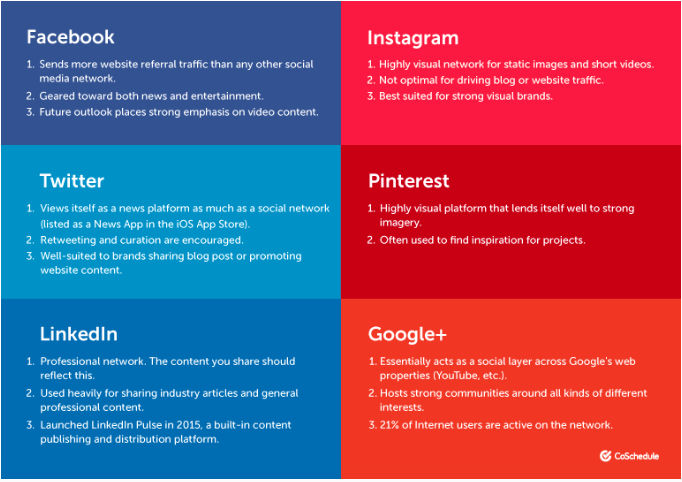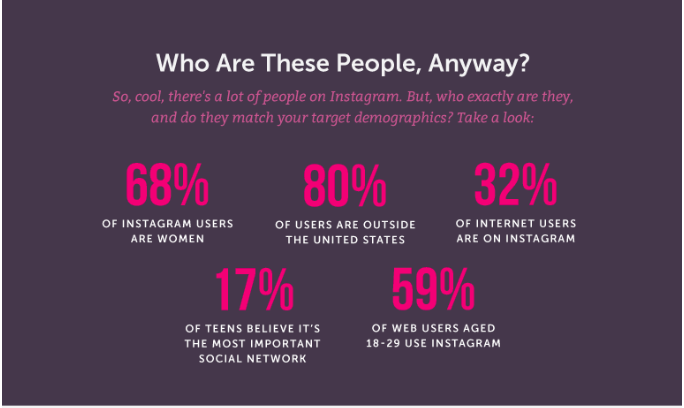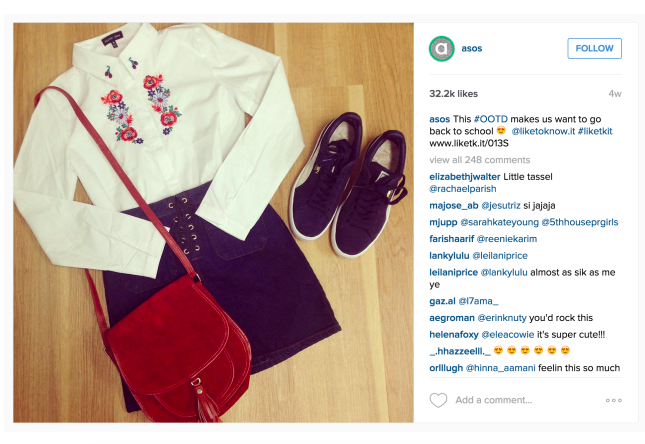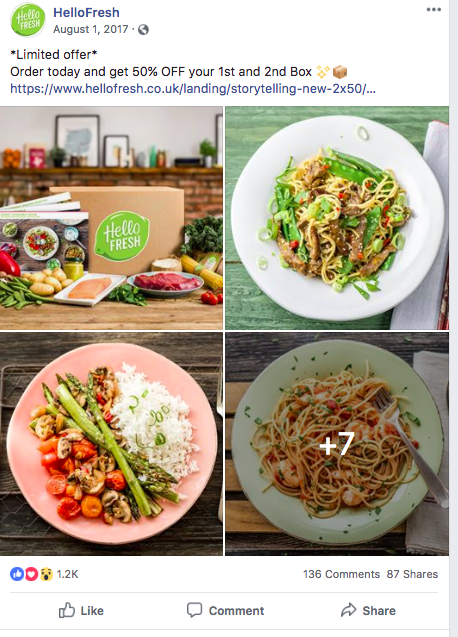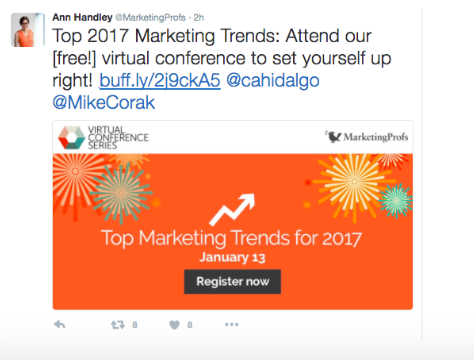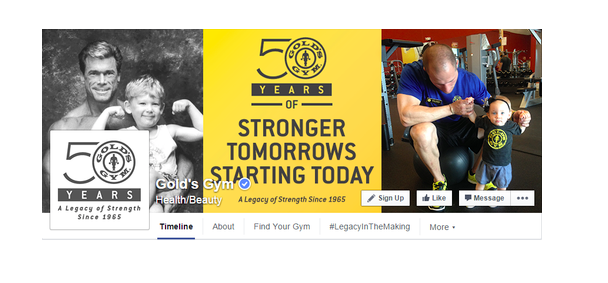Many marketers wrongly believe social media strategy falls firmly in the brand building category. Lead gen, not so much.
Sure, the tides are turning. Companies now have the option to use paid ads on LinkedIn, Instagram, and good old Facebook to drum up click-throughs and ebook downloads galore.
That said, these paid opportunities aren’t the only way to get attention. Social media, in all of its iterations, can help you connect with your customers and grow your audience—that’s a given. But, it can also help you generate leads that turn into customers. In fact, roughly 45 percent of businesses have reduced costs thanks to social media. About 24 percent of those businesses see a revenues increase.
Here’s a look at how you can use social media to generate more leads:
Figure Out Your Social Channels
Some types of content work better for specific platforms. Think about your business and what works best. This should help you narrow down your platforms. If your content is fun, B2C fare, post your blogs to Twitter and Facebook. Make short videos? Add those to Instagram.
Webinars and technical white papers might do better on LinkedIn. Instagram is a picture-centric platform, so visuals work best, so skip the wordy ebook, here.
That said, the type of content you create depends on your brand, your industry, and your target audience. It’s also about your goals. Do you want people to order products right away or do you need to qualify leads and follow up?
Here’s a look at which platforms work best for different purposes:
Twitter— Twitter is a great way to connect with followers by sharing news, updates, and announcements. The platform has the highest sense of urgency and works well for text-based content. Images perform better than videos, but it is also great for promoting a blog or article link accompanied by a nice photo.
LinkedIn— Best for B2B, LinkedIn can be used for lead generation. This is an excellent place to share editorial content that helps you promote yourself as a thought leader in the industry. The demographic skews a bit older than Facebook, Twitter or Instagram. Most users are between the ages of 30 and 50.
We recommend only sharing high quality, serious content—nothing fluffy or unprofessional. LinkedIn isn’t your best choice if you sell consumer products like clothing, food, or anything in the entertainment space. SaaS products, technology, and business services can do well here, though.
Instagram— Instagram’s demographics are young. Most fall within the 18-29-year-old range, with more women than men using the platform.
Retailers are using Instagram to their advantage. This works well because, when you’re selling something like clothing—you can post outfit ideas and add links to pieces, just like ASOS has done here.
Facebook— Facebook has the largest user base of the bunch. Most fall between 25 and 54, so you’re able to cast a pretty wide net. Facebook works well for building relationships with customers and sharing multiple types of content—from contests and giveaways to blogs and gated content.
Promotional Tactics
Social media’s lifecycle is very, very short. So, on the whole, your content needs to be:
- Timely
- Helpful
- Actionable
- Targeted to the right audience
That said, once you’ve got the tone down and have the pulse on what your audience wants to see, there are a few types of posts you can create that will help you capture the names and emails you need to make more sales.
Contests
Contests are a solid way to generate traffic to your site. Facebook and Instagram are your best choices here but beware of people looking for free stuff.
Still setting up a contest is a great way to generate leads as you can use those emails for marketing efforts down the line.
Free Trials or Samples
This technique allows you to connect with qualified leads on the fence of shelling out for your product. This is a great opportunity to find leads on LinkedIn, especially if you sell software or a cloud-based solution. B2B companies can sort through users based on job roles and other criteria. Meaning, you can target high-level decision makers without dealing with gatekeepers.
For B2C brands, you can offer a discount or a sample to users who enter their email or share your content. While this may be another way to attract bargain hunters, it can help people hooked on your service. Meal kit companies, like HelloFresh, do this quite a bit, as do beauty brands with small samples they can send out.
Pay Attention to the Comments Section
Facebook and Instagram aren’t just for self-promotion, they’re platforms for talking with your audience. Take the time to respond to the people who engage with your content as this helps form a positive impression of your brand. While this isn’t a direct way to get leads, it can play a role in whether a customer decides to give you their information later on.
Facebook and Instagram aren’t just for self-promotion, they’re platforms for talking with your audience. Click To TweetPolls and Surveys
Ask your followers for input. While a full-blown survey is maybe not so appealing to users, asking about preferences or ways to improve shows that you care what your audience has to say about your product.
Gated Content
Promoting gated content is an easy and effective way to get a bunch of email addresses. Social media makes it easy to spread the word about your online event or exclusive content. You’ll need to develop posts that lead to an optimized landing page complete with the form fields that will help you qualify leads.
You’ll still need to capture the audience. Make sure your post has an image—like the cover of an ebook, a gif, or a slick photo that starts to tell your story.
This example from Marketing Profs prompts you to sign up for their free virtual conference. Here, the post makes it clear that signing up means learning something new. There’s no doubt about what you’re going to get.
Live Events
Posting live content is another way to connect with your audience and capture valuable leads in the process. Here, you’ll answer questions, collect feedback, and present some of your own solutions.
The lead gen part comes in here. You can drive users to specific pages that ask for email information in exchange for downloads or newsletter updates.
Just Ask for the Sign-Up
The below example of Gold’s Gym’s Facebook page takes a social media account and turns it into a lead generation tool. It’s not an active sales ask, but it does catch the viewer’s eye–albeit in a subtle way. Adding the sign-up button alongside the like and message option gives the page more purpose than competing for likes.
While you’re not going to get everyone on board, the prominent placement follows the same strategy you’d use on a website—a CTA on every page, in a visible location.
How Do You Grow a Social Following From Scratch?
Even if you’re marketing savvy—getting followers on social media can be daunting. Potential customers will look at your numbers—which affects their decision to follow you. It’s like the old “you need to have money to make money’ adage, but somehow more personal.
Some quick tips for building your legions of future brand ambassadors:
Do Unto Others
The golden rule of social media is you need to follow others to get people to follow you. Following relevant, legitimate accounts is your first step. But, good, active accounts will make the difference. Look at who influences in your niche are following, check Twitter lists, and join groups on Facebook and LinkedIn. Follow people you find in those relevant groups.
Give Your Profile a Facelift
Is all your information there? Fill in all fields available and make sure everything is up-to-date, spelled correctly, and good to go. Use keywords in your profile that you want people to use to find you (just like your website).
You’ll also want to make sure your profile pictures are attractive and varied. The former means having a nice logo, used as your profile picture and professional photo for the cover image. This could be something from a recent lookbook or food you serve, or whatever you sell.
Second, make sure your profile isn’t only images of flyers and ads. We’ve all seen those profiles.
Use the Right Hashtags
When you use popular hashtags, chances are you’ll grab some followers in the process. Search for hashtags through a variety of tools like TINT, HootSuite, or RiteTag or look them up on Instagram and Twitter. That said, always make sure you look at the hashtag before you hit “post.” You don’t want to associate yourself with something that could harm your brand.
Using Social Listening for Lead Generation
You don’t hear about this one a lot, but using social listening for lead generation is an excellent option for brands that want to take a proactive—and personalized approach.
The idea is, you’ll use a media monitoring tool like Mention, BuzzSumo, or Google Alerts and track for specific keywords. For example, you might scan for words related to “Fall sweaters” and wait for users to mention related keywords. Then you can reply to a Tweet with a discount code or something.
That said, be careful. This option works best if users are trying to crowdsource a suggestion, in which case, you can chime in and be helpful. If you’re chiming in on something vaguely related, it can come off as spam.
Finally, Make Sure You’re Always Using a CTA and Landing Page
If your goal is to generate leads, then you’ll need to make sure you’re providing a clear directive. Make sure you create an optimized landing page that offers what you’ve promoted in your post.
So, if you have an ebook download you’re advertising, make sure the landing page showcases that book and includes a form for the download.
If you’re promoting specific products or a blog post, make sure there’s a place for gathering email addresses. E-commerce sites can have an overlay offering a discount on the first order if they set up and account—or a rewards program. Blog posts on a B2B site can ask visitors to sign up for newsletters promoting new content.
Obviously, different types of content require different landing pages. In any case, the point is to get your visitor to enter their information, buy something, or take some other action.
The tips listed above aren’t going to land your thousands of leads overnight. However, they will help you build a following and connect with your customer base over time.
At Tall Cube, we take a data-driven approach to generating more leads. We’ll help you optimize your landing pages and boost conversions. And, we’ll let you know which parts of your strategy could use some help, social media and all.
Contact us today to learn more.

